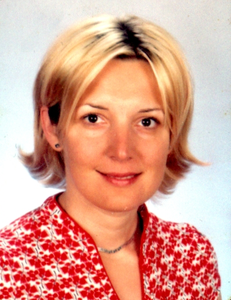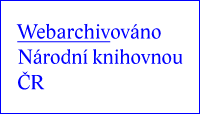Editorial 2024/2
Dear Readers,
 We are pleased to present you with the winter issue of Knihovna: knihovnická revue, featuring a range of both historical and contemporary topics, with an eye toward the future.
We are pleased to present you with the winter issue of Knihovna: knihovnická revue, featuring a range of both historical and contemporary topics, with an eye toward the future.
In the peer-reviewed section, you will find four articles. The first one explores the issue of linked data and its potential future in the Czech Republic, specifically focusing on the possibility of its implementation in the Czech library system. Based on an analysis of bibliographic and authority records, the authors propose transitioning to new formats, such as BIBFRAME.
The second article examines the education of women during the Middle Ages. Drawing on her thorough research, the author provides interesting insights into the educational processes of women in medieval monasteries. She outlines the various stages of learning, from simple memorization of words to reading basic texts, culminating in engagement with more demanding works.
The third article investigates the history of the music collection in Skalsko, located in the Central Bohemia region (Mladá Boleslav district). Again, grounded in an in-depth study of historical materials, the author provides a detailed characteristics of the music collection preserved in the Church of St. Havel in Skalsko. This unique collection, comprising 300 musical pieces from the 18th and 19th centuries, represents another forgotten and truly rediscovered collection from rural Czechia. Parts were acquired or copied by local choir directors, but the collection also includes sheet music from nearby villages of Březno and Bezno as well.
The final article in the peer-reviewed section presents compelling research on the preservation and restoration of historical library collections. In addition to the text itself, books and other library documents often contain handwritten notes, ownership records, signatures, and stamps from past and present owners. These supplementary elements provide important information on a particular book’s history, its creators, readers, and places of origin and storage. Preserving these marks without alteration is crucial, yet they are often made using unstable inks or dyes, including the stamp inks, frequently used in the past. Protecting and stabilizing these annotations is therefore an essential aspect of conservation or restoration work. However, the potential instability of the writing materials, and the resulting risk of record alteration, can both hinder the identification of items and cause irreversible damage to the documents. How should valuable documents with such records be treated during restoration? Any additional insights into the behaviour of writing materials under modern chemical interventions are valuable.
In the Libraries and Information at Home and Abroad section, we share the results of already the fifth statistical survey of readers and reading focusing on current reading trends in the Czech Republic, and associations tied to reading (what media, institutions, functions and roles do the respondents connect with the reading, including the evolution of these preferences over time).
We also feature a tribute to Associate Professor Pavel Ranka, a long-standing member of our editorial board, who recently celebrated a significant milestone. We extend our gratitude for (not only) his dedication to the journal and wish him good health and continued success in the years ahead.
This issue includes a review written by our colleague from the National Library of the Czech Republic, assessing a publication by Polish authors on the development of the printed book in Poland between the 15th and 17th centuries. As noted by the reviewer, the book, published in English, serves as "a commendable model for communicating a nation’s printed cultural heritage to an international audience".
As usual, the issue concludes with the sections Recommended Reading from the Library and Information Science Literature Library and New Library Science Publications from Abroad.
I would like to express my sincere gratitude to the entire editorial board, our authors and reviewers, and all those who contributed to the journal throughout the year.
On behalf of the entire editorial team, I wish you enjoyable reading and a wonderful Advent season.
Renáta Krejčí Salátová









